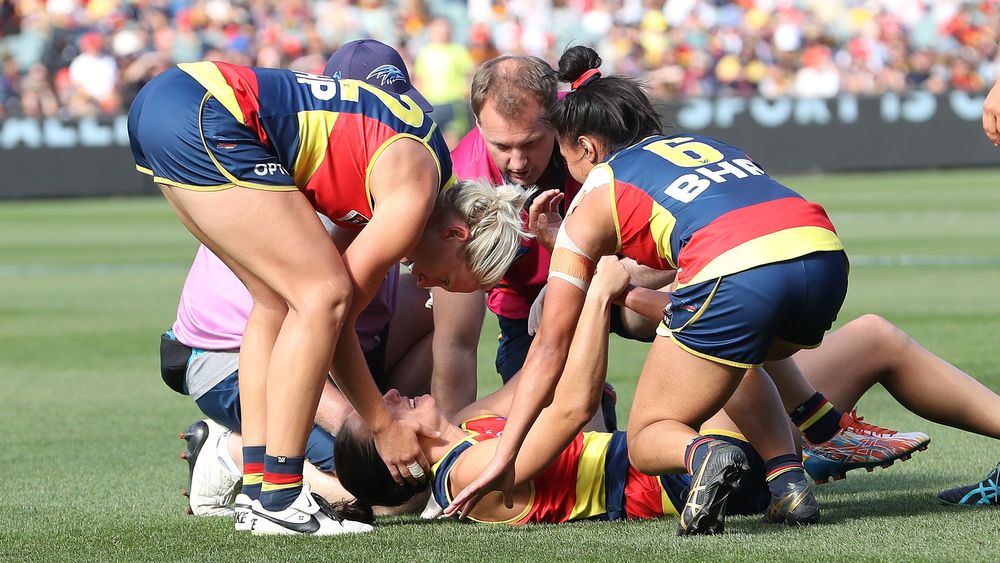A few months ago I had the privilege to meet Dr. Deirdre E McGhee at the Wollongong University, to discuss chest injuries in female athletes and why the majority of breast injuries remain unexamined & unaddressed.
Her work on education of what to do, and how to be the awareness of chest injuries to the forefront, a critical ingredient to overcome the scary statistics below, particular when a blow to the breast can result in pain, swelling, causing symptoms that can persist for weeks.
She explains more, that coaches, health clinicians, and sporting organizations lack sufficient knowledge about this often-overlooked, female-specific injury. Female athletes in sports such as soccer or football need to be aware of the potential risks. In Dr. Deirdre E McGhee recent review paper details how these risks evolve as breast structure and function change throughout life stages, including puberty, pregnancy, lactation, menopause, and post-surgery, a very interesting read for sure.
Some Scary Statistics We Have Come Across
A 2018 a study in the U.S. found that 47% of 90 female college soccer players experienced breast injuries, yet only 5% reported them. Many girls might feel uncomfortable discussing such injuries with male coaches, and injury surveys from sports clubs often overlook breast injuries. Additionally, 18% of the injured athletes stated that their injuries impacted their performance. A striking 98% of those who sustained breast injuries were only wearing standard sports bras without any additional protection.
In a 2020 survey of 207 female Australian Football League (AFL) and Rugby players, 58% reported having experienced breast injuries from contact, and 48% believed these injuries affected their game performance. While 87% of AFL players wore sports bras, only 31% felt their bras provided adequate protection against breast injuries.
Beyond pain and performance issues, significant literature highlights the negative effects of deep bruising to breast tissue. Severe bruising can lead to the formation of hard nodules or lumps in the breast, which can complicate future health assessments. Though not a direct cause of breast cancer, these lumps can be challenging to distinguish from cancerous growths, leading to increased personal stress and medical costs due to the need for multiple tests to rule out cancer.
Significant breast trauma during the early development years can lead to breast asymmetries. While some variation in breast size is common, substantial differences can disrupt a woman’s life. Research indicates that these asymmetries are often found in young women who have a history of breast trauma during critical developmental stages.

Exercise-Induced Breast Pain
Is caused by tension on the breast skin, internal ligaments, and fascia due to excessive motion, affects 44-72% of exercising females in the UK.A survey of 2,089 adolescent UK schoolgirls revealed high levels of breast concerns, with 87% reporting at least one issue. The most common concerns were “how to check for breast cancer” (44%) and “breast bounce when exercising” (38%).
Providing adequate breast support during running and jumping can alleviate discomfort and pain. A 2017 UK study found that better breast support during running increased the willingness to exercise among women (9). In 2010, a survey of 115 adolescent females from four regional NSW sporting academies (average age 16) showed poor bra knowledge, with 85% scoring below 50%. However, this knowledge improved with education.
These insights highlight the need for better breast protection and education among female athletes to enhance their comfort, performance, and long-term health.
As a result, most breast injuries go unassessed and untreated, despite causing symptoms that can persist for weeks, negatively impact athletic and work performance, and have long-term consequences, including:
- Breast fat necrosis (tissue death), which can lead to the formation of fibrous lumps within the breast.
- Breast deformities and asymmetries, either from halted breast development during puberty or the rupture of breast implants, both of which may require surgical correction.
- Damage to the milk ducts in lactating breasts, potentially affecting breastfeeding.
Protecting the Breasts
As women’s participation in traditionally male-dominated sports increases, there is a pressing need for greater awareness about breast injuries. Organizations like FIFA have a duty of care to educate female players, coaches, and medical staff on breast injuries and enhance their management and prevention.
While female-specific breast-protective garments are available on the market, there is no published evidence that they effectively reduce breast impact. Many female athletes and workers wear body armor and breast-protective equipment designed for the male torso, which may not fit women properly. Further research is needed to evaluate the effectiveness of these protective devices and to improve their design and fit to accommodate the diverse range of female breast and torso shapes.
What is next?
Here at Fempro Armour believe that prevention of injury is equally important than the awareness of injury and what to do. More research is necessary to determine the frequency and severity of breast injuries in sports like football, as well as the prevalence of long-term effects. Since the cause and type of injury vary by sport, it is crucial to conduct injury surveillance specific to each sport. In our opinion female designed body protection is a must in any sport, and this needs to be backed up with published evidence that they effectively work in protecting female athletes.
Discover “One Vest for All Sports by clicking HERE

